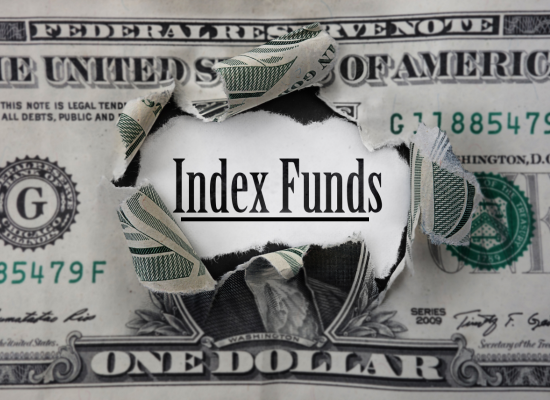When it comes to building wealth, there’s a concept that often gets called the “magic” of investing: compounding. It’s a simple idea that can have a massive impact on your financial future, especially if you start early and stay consistent. But what exactly is compounding, and why is it so valuable over the long term? In this article, we’ll break down compounding in plain terms, show how it works with real examples, and explain why it’s a key reason to start investing now. We’ll also connect it to strategies like diversification and index funds, which you may already know from our previous articles. Please note: this information is for educational purposes only and not financial advice.
What is Compounding?
Compounding is the process where the money you earn from your investments starts earning money itself, creating a snowball effect over time. When you invest, your money can grow through gains, interest, or dividends. With compounding, those earnings are reinvested, so you earn returns not just on your original investment but also on the gains you’ve already made.
Think of it as a cycle: you invest money, it grows, and that growth generates more growth. The longer this cycle continues, the faster your money grows, because each year you’re earning returns on a larger amount.
Here’s a basic breakdown of what is compounding and how compounding works:
- You start with an initial investment, called the principal.
- Your investment earns a return, such as interest from a savings account, dividends from stocks, or capital gains from index funds.
- Instead of taking that return out, you leave it invested, so it gets added to your principal.
- In the next period, you earn a return on the new, larger amount (original principal + previous returns).
- This process repeats, and over time, your money grows exponentially.
How Does Compounding Work in Practice?
Let’s look at a simple example to see compounding in action. Suppose you invest $1,000 in an index fund that tracks the S&P 500, and it earns an average annual return of 7% (a reasonable long-term average for the stock market, though returns vary year to year).
- Year 1: You start with $1,000. At 7%, you earn $70 in returns. Your new balance is $1,070.
- Year 2: Now you earn 7% on $1,070, which is $74.90. Your balance grows to $1,144.90.
- Year 3: You earn 7% on $1,144.90, which is $80.14. Your balance is now $1,225.04.
Notice how the amount you earn each year increases, even though the return rate (7%) stays the same. That’s because you’re earning returns on a larger amount each year. Over time, this growth accelerates.
Now, let’s extend this example over a longer period to see the real power of compounding:
- After 10 Years: Your $1,000 grows to $1,967.15.
- After 20 Years: It becomes $3,869.68.
- After 30 Years: It reaches $7,612.26.
In 30 years, your initial $1,000 has grown over seven times its original value—without you adding any more money. This is the power of compounding: the longer your money stays invested, the more dramatic the growth becomes, because your returns keep building on themselves.
Exponential Growth to Reach $1 Million
Compounding leads to exponential growth, meaning your money grows faster the longer it’s invested. Let’s scale up our example to show how you can reach $1 million by starting small and adding regular contributions. Suppose you invest $5,000 initially and contribute $500 per month (about $16 per day) to an S&P 500 index fund with a 7% average annual return:
- After 10 Years: You’ve invested $65,000 ($5,000 initial + $500 x 120 months). With compounding, your portfolio is worth $94,178.
- After 20 Years: You’ve invested $125,000. Your portfolio grows to $284,149.
- After 30 Years: You’ve invested $185,000. Your portfolio reaches $628,584.
- After 40 Years: You’ve invested $245,000. Your portfolio hits $1,260,053.
After 40 years, you’ve contributed $245,000, but compounding has added over $1 million in growth, taking your portfolio past $1.26 million. This shows how compounding can turn consistent, modest investments into a seven-figure nest egg over time.
Why is Compounding Valuable Long-Term?
Compounding is valuable because it rewards patience and consistency. Here are the key reasons it’s so powerful over the long term:
1. Exponential Growth
Compounding leads to exponential growth, meaning your money grows faster as time goes on. In the early years, the growth might seem slow, but as your investment balance increases, the returns become much larger.
2. The Importance of Starting Early
Time is the biggest factor in compounding. The earlier you start investing, the more time your money has to grow. Let’s compare two investors to illustrate this:
- Investor A starts at age 25, investing $5,000 in an index fund with a 7% annual return. They don’t add any more money.
- Investor B starts at age 35, investing the same $5,000 with the same 7% return.
By age 65:
- Investor A (40 years of compounding): Their $5,000 grows to $74,872.
- Investor B (30 years of compounding): Their $5,000 grows to $38,061.
Investor A ends up with nearly double the amount, even though both invested the same $5,000. That extra 10 years made a huge difference, showing why starting early—even with a small amount—can lead to big results.
3. The Impact of Regular Contributions
Compounding becomes even more powerful when you add money regularly. Let’s say you invest $100 per month in that same index fund with a 7% annual return, starting at age 25:
- After 10 Years: You’ve invested $12,000 ($100 x 120 months), and your portfolio is worth $17,548.
- After 20 Years: You’ve invested $24,000, and your portfolio grows to $52,093.
- After 30 Years: You’ve invested $36,000, and your portfolio is worth $121,997.
Here, you contributed $36,000 over 30 years, but compounding added an extra $85,997 in growth. Regular contributions, even small ones, can supercharge your results because each new investment also starts compounding.
4. Reinvesting Earnings
To maximize compounding, you need to reinvest your earnings, such as dividends or capital gains. Many index funds and stocks pay dividends (a share of company profits). If you reinvest those dividends by buying more shares, your investment grows faster. For example, an S&P 500 index fund like Vanguard’s VOO might pay a 1–2% dividend annually. Reinvesting those dividends means you’re buying more shares, which then generate their own returns, accelerating your growth.
5. Works with Any Investment Strategy
Compounding applies to many types of investments, whether you’re buying individual stocks, bonds, or index funds. In our previous articles, like “How to Build a Diversified Investment Portfolio on a Budget,” we discussed using index funds to diversify. A diversified portfolio benefits greatly from compounding because it reduces risk while allowing your money to grow steadily over time.
How to Make Compounding Work for You
To take full advantage of compounding, follow these practical steps:
- Start Now: Even if you can only invest a small amount, like $50 or $100, getting started early gives your money more time to grow.
- Invest Regularly: Set up automatic contributions, such as $100 per month, to build your portfolio over time. This strategy, called dollar-cost averaging, also helps reduce the impact of market volatility.
- Reinvest Earnings: Choose investments that allow you to reinvest dividends or gains automatically, like many index funds or ETFs.
- Keep Costs Low: High fees can eat into your returns, slowing down compounding. Use low-cost index funds, (e.g., VOO or SCHZ), with expense ratios below 0.1%. Before investing, make sure to check the expense ratios and characteristics of these funds, as these may change over time.
- Stay Invested: Avoid withdrawing your money early. The longer you stay invested, the more compounding can work its magic.
- Diversify: A diversified portfolio helps manage risk so you can stay invested for the long term, letting compounding do its job.
Compounding and Risk
While compounding is powerful, it’s important to understand that investments carry risk. The stock market, for example, can go up and down. In our examples, we used a 7% average annual return, but some years might see losses, while others might have higher gains. The key is to focus on the long term—historically, the stock market has trended upward over decades, which is why strategies like investing in a broad index fund can be effective for compounding.
If you’re worried about risk, consider a mix of investments, such as stocks for growth and bonds for stability. This balance can help you stay invested through market dips, ensuring compounding continues to work.
Final Thoughts
Compounding is one of the most effective ways to grow your wealth over time. By earning returns on your returns, your money can grow exponentially, especially if you start early, invest regularly, and stay committed for the long term. Whether you’re investing in index funds, stocks, or bonds, compounding rewards patience and consistency, turning small investments into significant savings over decades.
The key to harnessing compounding is to take action now, even with a small amount, and let time work in your favor. For personalized guidance, consider speaking with a certified financial planner to create a plan that fits your goals. With compounding, every dollar you invest today can grow into much more tomorrow.


